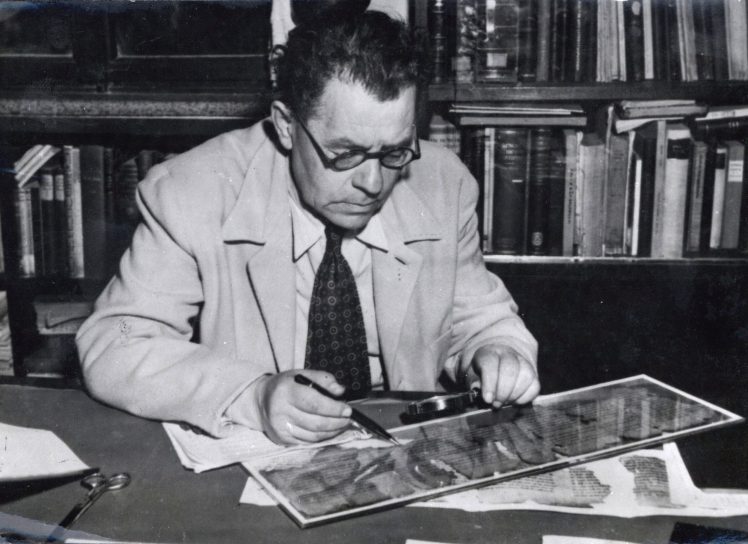
November 29 1947 – 16 Kislev 5708
Hebrew University archaeologist and philologist Eliezer Sukenik first received word from an Armenian antique dealer of the existence of the Dead Sea Scrolls. The documents, dating between 200 BC and AD 70, had been accidentally discovered earlier that winter by two Bedouin shepherds in the vicinity of Qumran. Sukenik was able to purchase three of the scrolls they had found, the War Scroll, the Thanksgiving Scroll and a small Scroll of Isaiah. The Great Scroll of Isaiah and three other scrolls had already been purchased Syrian Orthodox Metropolitan Stephen of St. Mark’s Church. In a strange twist of fate, Yigal Yadin, Sukenik’s son, would arrange for their purchase in 1954, and run the excavation of the Qumran caves where they were found.
Sukenik’s aquisition began with a simple newspaper ad in the Wall Street Journal, “Miscellaneous For Sale…Four Dead Sea Scrolls.” Yadin knew the importance of the items and arranged for a loan of a quarter of a million dollars (an incredible sum for the infant state of Israel) to bring them back to their ancestral home, where they formed the basis for the collection later housed in the Israel Museum’s Shrine of the Book. The secrets of the Dead Sea Scrolls are still being unlocked by scholars to this day. Considering that the acquisition of the scrolls began against the backdrop of the UN partition of Palestine and the Israeli War of Independence, the fact that the purchase was made at all is testimony to the far-sightedness of Israel’s leaders.
